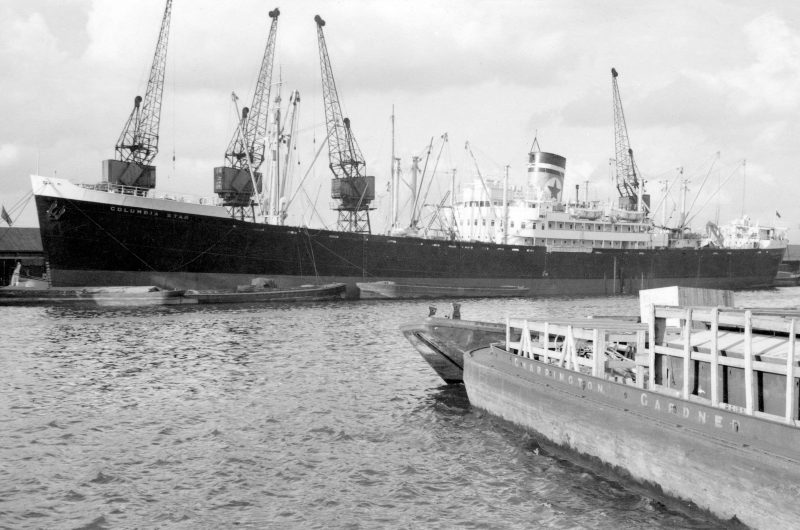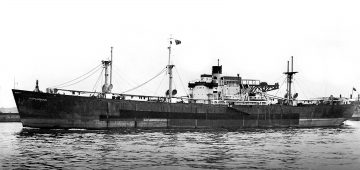by Capt Sandy Kinghorn

My last voyage in the Columbia Star 1951, still as a cadet, began at Newport, an old Bristol Channel coaling port, now in Wales but then still in Monmouthshire, England. Here we were loading all manner of general cargo from heavy machinery, steel pipes for the Alberta oilfields, furniture, grand pianos, Dainty Dinah toffees, etc. Our next port would be Barry to load, we were told, over 200 aerial bombs. These could blow us all sky high if they went off, we were told they were “lgnltioned” and maybe that was true.
“Are we going to war?” “Not yet, they are a new type of bomb, for the Canadian Royal Air Force”. Very carefully loaded from a wooden barge into a specially constructed wooden magazine in No 2. Tweendeck, my mate Peter and I tallied them in. He made it 251, I made it 247 so we settled for 249 and I went to tell the mate, who was sitting in his cabin with a senior-looking R.A.F. officer.

“Sure there aren’t 250?”
I nodded. The R.A.F. demanded a recount This would have meant unloading and reloading and we had to sail on the evening tide in an hour’s time, but a missing bomb was a serious matter. I thought it might help if I explained how we arrived at that figure. The R.A.F. looked doubtful until the mate poured him an enormous gin, whereupon he cheered up. I was dismissed and we sailed.
In the Bristol Channel we swept through the swan song of Masefield’s Dirty British Coaster with a salt-caked smokestack butting into a rising westerly gale at six or seven knots, woodbine funnel aft, open bridge amidships, two or three stumpy masts, coaly smoke streaking astern as they pitched into the gale. Dozens put to sea on the tide – the high tidal rise and fall in the Bristol Channel has always made ships leave in groups. We passed the three masted schooner Result under sail and power and clean, squat little motor vessels known to seamen as ‘skoots’ (from the Dutch schuyt) carrying coal, steel, and slates, building materials, general cargo, even passengers around the narrow seas. Soon we left them astern and by near sunset the distant sky was a pale wash of lemon beneath a grey stormy rack. Silhouetted on the horizon was a destroyer and a heavily listing ship accompanied by a tug, the Turmoil towing Captain Carlson’s Flying Enterprise which was to sink the next day while trying to reach Falmouth, fortunately without loss of life. Occasionally we came across a French or British weather ship rolling gunwales under and hardly visible in the steep Atlantic swell.

Subscribe today to read the full article!
Simply click below to subscribe and not only read the full article instantly, but gain unparalleled access to the specialist magazine for shipping enthusiasts.




Comments
Sorry, comments are closed for this item